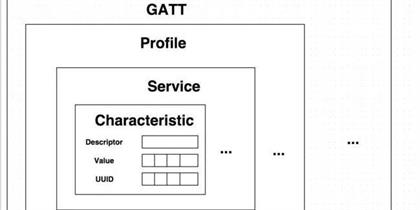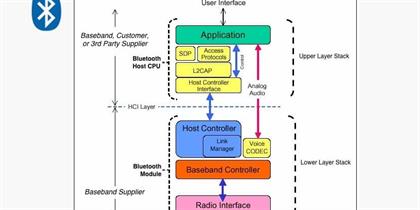
The Essential Parameters: A Deep Dive into Reply Bluetooth Beacons
September 02, 2024

In the intricate world of Bluetooth beacons, understanding the key parameters is crucial for selecting the right device for your needs. Reply Bluetooth Beacons, with their array of features, offer a robust set of specifications that can guide users through the maze of possibilities.
Transmitting the Signal: TX Power and Range
At the heart of every beacon lies its ability to transmit a signal. The TX Power, adjustable in Reply Bluetooth Beacons, determines the strength of the signal. A higher TX Power extends the range, which can be up to 100 meters or more under ideal conditions. However, the actual range can vary based on environmental factors, such as the presence of walls or other obstacles.
Receiving Sensitivity: The Beacon’s Ear
Just as important as transmitting is the beacon’s ability to receive signals. Receive Sensitivity, measured in dBm, indicates the lowest signal strength a beacon can detect. A higher sensitivity allows the beacon to ‘hear’ signals from devices that are farther away or have weaker transmitters.
Air Rate: The Speed of Communication
The Air Rate, or the speed at which data is transmitted, is another critical parameter. Reply Bluetooth Beacons support air rates of 250Kbps, 1Mbps, and 2Mbps, providing flexibility to match the speed with the application’s requirements. Higher air rates are beneficial for applications that require the transmission of larger amounts of data.
Frequency Band: The Beacon’s Voice
Operating within the 2.402GHz to 2.480GHz ISM band, Reply Bluetooth Beacons ensure global compatibility. This frequency band is reserved for industrial, scientific, and medical uses and is free from licensing requirements, making it ideal for widespread deployment.
Antenna: The Beacon’s Reach
The type of antenna used can significantly impact the range and quality of the signal. Reply Bluetooth Beacons may feature PCB Onboard or External Antennas, each with its advantages. PCB antennas are compact and cost-effective, while external antennas can offer improved signal strength and directionality.
CPU and Memory: The Beacon’s Brain
The processing power of the CPU and the amount of memory in a beacon determine its ability to handle complex tasks and store data. Reply Bluetooth Beacons are equipped with powerful CPUs and sufficient memory, ensuring smooth operation and the capability to run advanced applications.
Power Supply: The Beacon’s Lifeblood
The power supply of a beacon dictates its operational life. Reply Bluetooth Beacons support a wide range of power supplies from 1.8V to 3.6V, allowing for flexibility in power options. The choice between a battery-powered or a mains-powered beacon will depend on the installation location and the required lifespan of the device.
Operating Temperature: Withstanding the Elements
The operating temperature range of a beacon is crucial, especially for devices that may be deployed in extreme climates. Reply Bluetooth Beacons are designed to function in a wide range of temperatures, from -40℃ to +85℃, ensuring reliable operation in both hot and cold environments.
Peripheral Interface: Expanding the Beacon’s Reach
The peripheral interfaces available on a beacon, such as UART, SPI, I2C, and ADC, allow it to connect with and control other devices. These interfaces expand the beacon’s capabilities, enabling it to be part of a larger system.
Serial Transparent Transmission Rate: The Beacon’s Communication Speed
The Serial Transparent Transmission Rate indicates the speed at which the beacon can transmit data to connected devices. For BLE, Reply Bluetooth Beacons offer a rate of up to Several tens of K/s, ensuring efficient data transfer.
Conclusion
Reply Bluetooth Beacons are defined by a constellation of parameters that work in harmony to deliver a powerful, reliable device. By examining the TX Power, Receive Sensitivity, Air Rate, Frequency Band, Antenna, CPU, Memory, Power Supply, Operating Temperature, and Peripheral Interfaces, users can make an informed decision that aligns with their specific application needs. As technology progresses, these beacons continue to evolve, offering ever-greater capabilities and more refined control over the connected world.
Leave a Reply
Related Products
You Might Like Also

In the intricate world of Bluetooth Low Energy (BLE) communications, the Generic Attribute Profile (GATT) plays a pivotal role in defining the structure and methods for data exchange. Central to this are the processes of Notifications and Indications, which are the primary means by which GATT servers update clients about changes in attribute values Read More

Central to BLE’s functionality is the BLE Generic Attribute Profile (BLE GATT), which serves as the protocol’s backbone, enabling efficient and structured data communication between devices. This article aims to provide an in-depth exploration of GATT, its components, and its role in BLE technology. Read More

In the realm of wireless communication, Bluetooth advertising has carved out a niche for itself, becoming an indispensable technology for short-range connectivity. At the heart of Bluetooth functionality lies the advertising process, which is the cornerstone for device discoverability and connection establishment. This article delves into the intri Read More

Bluetooth data structures are the foundational elements that govern how data is packaged, transmitted, and received within the Bluetooth ecosystem. These structures are designed to optimize the efficiency and reliability of wireless communication, ensuring that data is handled effectively across various devices and platforms. Read More

In the intricate world of wireless communication, Bluetooth Protocol Stack has established itself as a cornerstone technology, facilitating seamless connectivity between a plethora of devices. At the heart of this technology lies the Bluetooth protocol stack, a structured set of protocols that govern how devices communicate. One of the most critica Read More

In the intricate world of wireless communication, the Bluetooth Generic Access Profile (Bluetooth GAP) of Bluetooth technology stands as a cornerstone, enabling devices to connect, communicate, and collaborate seamlessly. This article delves into the essence of Bluetooth GAP, its role in establishing connections, and the myriad ways it enhances our Read More











